Latest Posts

5 Fun Facts to Celebrate Fibonacci Day
Fun fact: The Fibonacci sequence can be found in flowers, pine cones, tree branches, and shells.
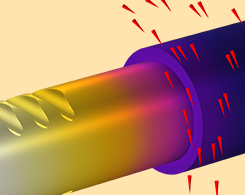
Predicting the Effects of Induction Heating with Simulation
What is induction heating? What are the benefits of it? Can it be simulated with COMSOL Multiphysics? Keep reading to find out…

Möbius Strips: Where Math Meets Art
The Möbius strip was simultaneously and independently discovered by two German mathematicians in the 1850s. Today, this one-sided object is found in tools, art, nature, and more.

Modeling the Permeability of Composite Reinforcement Materials
Here, we go over how to model the permeability constant of an idealized composite reinforcement material.
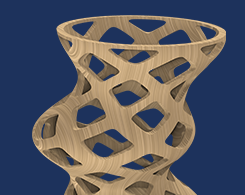
Forming New Ideas with Generative Design in COMSOL®
Pencils were invented in the 16th century and erasers in the 18th century. However, it wasn’t until the 19th century that erasers were attached to pencils in the typical design we know today.

Optimizing Solar Cell Designs with a Simulation App
The SolCelSim app, designed by an MSc student at the University of Zilina, enables researchers to simulate solar cell designs, even if they are unfamiliar with simulation software.

Extracting DNA: From Pumpkins to Mammoths
Here, we go over how to recover DNA from a pumpkin using a simple experiment, as well as how scientists made a recent breakthrough in DNA extraction research.
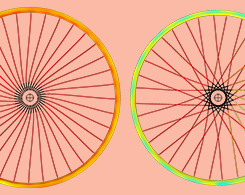
Why Do Road and Mountain Bikes Have Different Spoke Patterns?
Why do some bicycle rims come with warnings? Why do some bicyclists prefer rim brakes? To find answers, we model the forces in a bicycle rim for different brake types and spoke lacing patterns.
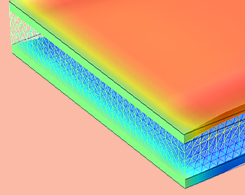
Modeling Piezoelectricity: Which Module to Use?
Acoustics Module, MEMS Module, Structural Mechanics Module: Which one should you use for your piezoelectric device modeling? Get a comprehensive overview of your options here.
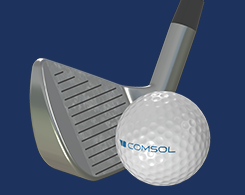
Why Do Golf Balls Have Dimples?
Why do golf balls have dimples? Can I model a golf ball with COMSOL Multiphysics? Can I use simulation to optimize my shot and make a par? Find answers to these questions and more…
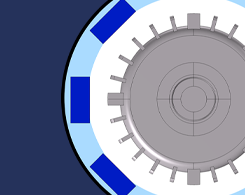
Designing the Sound Absorption of Microlattice Structures
Using numerical simulation, you can design microlattice structures with sound-absorbing properties, and then print them via additive manufacturing without traditional manufacturing constraints.

Micromagnetic Simulation with COMSOL Multiphysics®
A guest blogger from Fudan University in China used the Physics Builder in COMSOL Multiphysics to create a “Micromagnetics Module” for performing micromagnetic simulations.
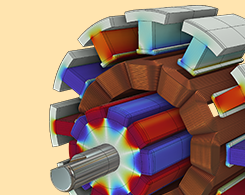
Computing Loss, Temperature, and Efficiency in Electric Motors
Follow along as we investigate the variation of iron and copper losses, the resulting temperature rise, and its effect on the efficiency of a permanent magnet machine.
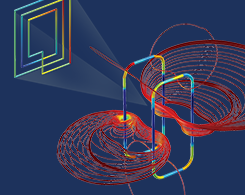
The Growing Use of Simulation in the Biomedical Industry
From implants and stents to MRI and spinal cord stimulation, numerical modeling is paramount to biomedical device development. Learn more and hear from key players in this industry.
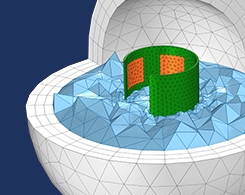
Wrapping and Warping Geometries for Analysis in COMSOL®
CAD parts are typically designed in an undeformed, as-manufactured state. When it comes to analysis, however, we are only interested in the deformed, as-assembled state.
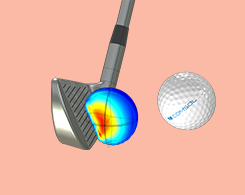
Fore! Analyzing the Performance of a Golf Ball with Simulation
Did you know that golf balls were originally made out of wood? We discuss the evolution of the golf ball and how simulation can be used to analyze modern golf ball designs.

Happy Birthday, Adhémar Jean Claude Barré de Saint-Venant
The shallow water equations, a derivation of the Navier–Stokes equations, and Saint-Venant’s principle can all be credited to French physicist Adhémar Jean Claude Barré de Saint-Venant.

Simulating the Pressure in an Ultrahigh Vacuum System
The ETpathfinder research facility in the Netherlands was built in anticipation of the proposed Einstein Telescope (ET), a third-generation observatory of gravitational waves.
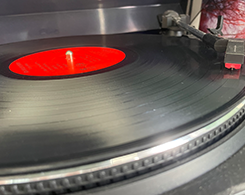
The History and Science Behind Vinyl Records
As vinyl records explode in popularity, we take a look back at the history of records, as well as the interesting science behind how they are produced — and how they play music.
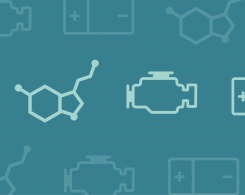
How to Model Metabolic Reaction Networks with COMSOL®
Certain ice creams, puddings, and candies have an extremely vivid yellow color that comes from vitamin B2. The manufacturing of this supplement is one example of a metabolic reaction network…

Happy Birthday, Egon Orowan
Egon Orowan found that the theory of dislocations could be used to explain the plastic deformation of ductile materials. He also studied geological fracture, munitions production, and more.
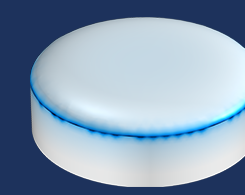
Curve Fitting of Solution Data in COMSOL Multiphysics®
We discuss curve fitting of continuous solution data, the concept of orthogonality, and how to fit solution data to a set of orthogonal functions for a simple and convenient postprocessing operation.
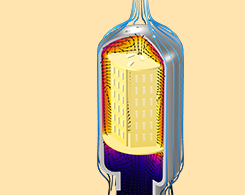
Analyzing LED Bulb Designs with Heat Transfer Simulation
LED bulbs are billed as more energy efficient than traditional bulbs, but they are not 100% efficient in turning electricity into light, making thermal management a vital design consideration.
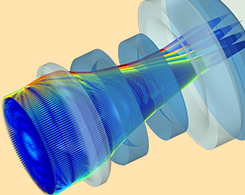
Zooming in on a Compact Camera Module Design with Simulation
Lights, camera, simulation: Read about factors that help define the performance of compact camera modules (CCMs) as well as how optical ray tracing can be used to analyze their design.
